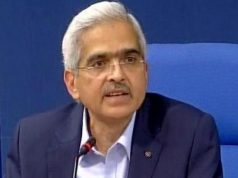New Delhi – The buzz has left India’s marketplaces and its offices. Instead, it’s moved to spots outside banks and in front of cash machines, where people queue for hours every day to exchange high denomination currency notes which the government said a week ago were no longer legal tender.
In one of the capital’s prime commercial areas, Connaught Place, long lines of people trail across pavements and snake into car parks. It’s reminiscent of wartime queues for food.
New people join the line every time someone emerges triumphantly from the bank clutching 45 precious 100 rupee notes. They are worth, in total, about 66 dollars.
Men and women – most of them working class and middle class professionals – jostle each other and are pushed back by security guards as some bang the bank’s closed doors.
People stand in long queues to exchange 500 and 1000 rupee notes in Allahabad, India on November 10,2016. More than a week after the Indian government suddenly withdrew 500- and 1,000-rupee notes in an effort to check tax evasion, the country·s poor and middle class are still reeling from the impact. (Credit Image: © Amar Deep/Pacific Press via ZUMA Wire)
The chaotic scenes have been repeated daily in towns and cities across India, ever since 500- and 1,000-rupee notes were banned within hours of a November 8 television announcement by Prime Minister Narendra Modi.
Government officials have said the move was aimed at nullifying so-called “black money” – held in cash by the corrupt or in fake notes being used to fund terrorism. It is essentially unaccounted money for which taxes have not been paid.
Initially the move was lauded by most citizens and commentators. Media described it as a surgical strike against black money.
But as days went by, it was evident that the government’s shock and awe tactic had led to financial chaos and hobbled commercial activity in a country where 98 per cent of transactions are made in cash. There seemed to be no follow-up planning.
The country’s 2 million cash machines, which needed recalibration for the new 500 and 2,000 rupee notes, currently only manage to deliver 100-rupee notes for a few hours daily before stuttering to a stop.
It’s not uncommon to see banks suddenly down shutters, never mind that people who had waited for hours to withdraw the limited daily amount are still queued up outside. To many, it’s clear the central bank failed to keep pace printing the new notes.
“I owe the vegetable vendor, the grocery shop, my maid who wants to go home,” school teacher Anjali Verma said. She waited five hours for two successive days outside her bank. “Middle of the afternoon, they lock their doors and say cash has finished.”
Verma’s domestic help, Mita Giri, a migrant worker from the eastern state of Odisha, is returning home after a year.
“She takes only 50 per cent of her salary, the rest she leaves with me to take home at the end of the year. In her village they use cash for everything.”
“I send money home every month. I pay someone here and his brother gives my mother money in the village. I don’t have a bank account. What do I do with money I have saved? It’s all 500-rupee notes,” said Babu Mandal from a small seaside village in West Bengal.
Mandal drives a rickshaw in the New Delhi suburb of Gurgaon. He said fewer people are using rickshaws, as they have to pay cash. The fruit vendor next to him said he was having to do distress sales. “People are not buying, the fruit are spoiling.”
Opposition Congress party vice president Rahul Gandhi said demonetization was not a bad idea, but the planning was faulty.
“People with real black money are not standing in these lines. It is the poor, honest middle class people who are suffering. Better arrangements should have been made,” Gandhi said.
For the past week, Dalbir Singh has had few footfalls in his shop selling shirts and T-shirts in a market in the RK Puram area of Delhi, which has a concentration of living quarters for government workers.
“No one wants to part with their hundred rupee notes for things they see as non-essential,” Singh said. “But it’s a good step. All those people who have taken huge bribes are getting heart attacks.”
The government’s move has caused disruption and anxiety for 95 per cent of people to target 5 per cent dishonest ones, said policy analyst Ranjan Malhotra.
“It’s more like napalm bombing than a surgical strike,” Kolkata-based physician Kunal Sen said.
Modi has said things will be back to normal by the end of December till when the old currency notes can be deposited at banks.
Sahil Kini who works with a Bangalore-based investment fund said it could be a much longer haul. With resources available, he estimates it would take at least five months to get all the cash back in the system.
According to the Reserve Bank of India (RBI) the total value of the cash in circulation in March 2016 was 16.4 trillion rupees in value of which the 500 and 1000 rupee notes comprised 14.1 trillion.
-dpa











